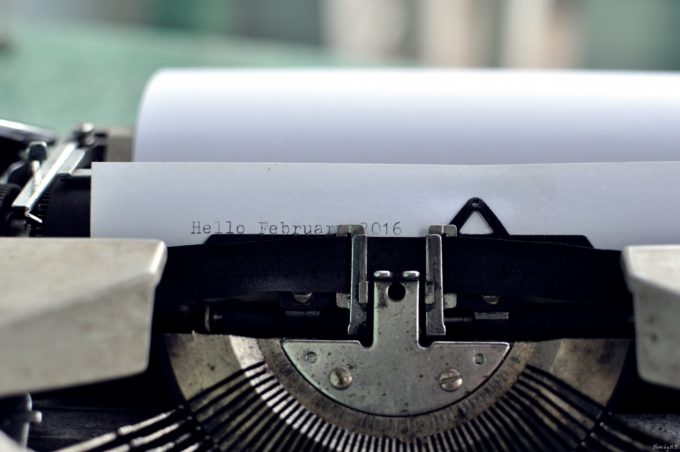
How to Sell Your Art with Creative Newsletter Content
Do you read the ASF blog regularly?
Then you already know the importance of creating and sending a consistent email newsletter to sell your art.
Especially during the holiday buying season.
Most people will not buy anything the first time they come to your website, so building a relationship with your potential customers through your newsletter is crucial.
Keep your potential customers engaged with unique value-driven content, so you can strategically ask them for sales when you have the best chance of converting.
It’s critically important to keep your audience engaged with consistent content, so when you are ready to ask for a sale, it’s not coming out-of-the-blue, which can seem spammy and too much like you’re trying to do the “hard sell.”
How Often Should You Send a Newsletter?
I personally recommend sending an email newsletter out at least twice per month to keep yourself top-of-mind among your audience, but once a month can work too, as long as you’re consistent.
A consistent email newsletter gives potential customers a no-risk way to experience you and your business that creates trust. And developing trust with potential customers is critical for making sales!
So now that we’re all on the same page about the importance of sending out a regular email newsletter, let’s talk about the elephant in the room:
The problem with newsletters is, of course, coming up with consistent content ideas.
I get it, because I send a newsletter out every week, and I know there’s nothing worse than sitting down to write your weekly or monthly newsletter and having no earthly idea what to write about, staring at your computer screen, feeling nothing but despair.
How Do You Come up with Content Ideas?
Create an Editorial Calendar
That’s where an editorial calendar comes in handy. An editorial calendar is simply a schedule of all the content you plan to produce and when you plan to send it out, which you create in advance, then follow throughout the quarter, or year, or however you prefer to do it.
(I usually create my editorial calendar once per quarter, but you can do it once a month, once every 6 months, or whatever suits you best.)
What I do is clear 2-3 hours in my schedule, then sit down and brainstorm newsletter content ideas based on the questions I get on social media, in email, and directly from clients and potential clients. Then I fill in my editorial calendar with the topics I plan to write about weekly based on those questions, and the dates I plan to send it out.
If you do this regularly you’ll never run out of ideas for newsletter (or even blog) content.
If possible, you want to come up with content that reverse engineers your product or service, which, by the way, I know is not so easy to do with art, but it can be done with a little creativity and ingenuity.
This is something I learned in Marie Forleo’s B-School, then implemented in my blog and newsletter content.
And it works.
How to do this: You brainstorm a long list of all of the topics that directly relate to what you sell, then you create content that educates your audience and also positions your product or your service as the best solution.
You reverse engineer the sale.
Educate Your Audience
The silly (but effective!) example Marie uses in B-School is this: If you sell giant pumpkin seeds you’d write an article about the 5 mistakes that pumpkin farmers make when they’re trying to grow record breaking pumpkins.
You’d talk about all the mistakes they make and one of those mistakes would be choosing the wrong seeds. And there you go – you just sold some seeds. ☺
An example from my own business: I’ve written blog posts like “3 Website Mistakes Photographers Make,” “Why Most Product Websites Make Me Sad,” and “Is This One Website Mistake Preventing You from Attracting and Converting Clients Online?” etc.
And though my readers can fix these issues themselves because I explain in the post how to do just that, people also hire me because they want to tap into my copywriting expertise to do the writing for them to solve these problems.
What Are Some Questions You Could Answer about Buying Art?
So as an artist, what you want to do is think of all the questions, issues and challenges folks have around buying art, questions I’m sure you’ve been asked dozens of times by buyers and potential buyers, and even friends and family members, and write newsletter content that addresses those issues.
For example, how to frame art; how to hang art; what’s the difference between an original work and a limited-edition print?; why original art costs what it does; how to discover emerging artists; how to decorate with art; how to hang & group art together for the greatest impact; how to buy art for a collection; how to educate your eye for buying art; what you can learn about collecting art from attending museums, galleries and art fairs; how to shop for art; should you buy art for pleasure or for investment, or both?; how to buy art on a budget, how to buy your first piece of art.
(Of course, you will be gearing these topics to your target audience and your ideal customer.)
I could go on and on. As you can see, the ideas are positively endless. Now, not all these topics directly “reverse engineer” a sale, however, your newsletter subscribers will be grateful to you for educating them on these topics; they will develop trust in you as a business person and an artist who cares, making them much more likely to buy from you when you do make a direct ask for a sale.
Amazon: The Ultimate Content Idea-Generating Tool
Amazon is another great resource for brainstorming content ideas. What you want to do is search for books in your topic area, then look at book chapter titles.
For example, I looked up books about art collecting on Amazon, and found several titles that deal with that topic, such as: Collecting and Care of Fine Art: An Introduction to Purchasing, Investing, Evaluating, Restoring, and More.
I clicked on “Look Inside,” and noted the following chapter titles:
- How to Learn About Art
- Where to Buy Art
- Fakes and Experts
- Types of Art to Invest In
- Risks vs. Rewards and Deals to Avoid
From the book, The Intrepid Art Collector: The Beginner’s Guide to Finding, Buying, and Appreciating Art on a Budget, I spied the following chapter titles:
- Dealing with Dealers
- Buying Art Online
- Art in Your Home
I quickly looked for a few other books on art collecting and noted these chapter titles:
- Why Collect
- What to Collect
- How to Collect
- Living with Art
- What Makes a Specific Work of Art Valuable?
- What Determines the Commercial Value of Art?
Of course, you don’t want to copy these ideas or chapter titles verbatim, you want to use them instead as jumping off points to help you come up with your own newsletter content ideas. And as always, you want to gear your newsletter content to your target audience and your ideal buyers/collectors.
In addition to book chapter titles, can also look at magazines on Amazon in your topic area, and note article headlines to come up with content ideas.
Other Ideas
If you do something interesting in your day job, that can always be fodder for newsletter content as well.
As I mentioned briefly in a previous ASF blog post, I have one client who works on a horse farm, and she sends out a regular newsletter about life on the farm called “Notes from Horse Country.” This works for her because much of her art and jewelry is horse-themed, so this gives her a natural opportunity to add links back to her website where folks can buy her work.
I have also worked with fine art photographers who travel frequently in the backcountry and other wilderness areas, and write about their adventures and travels in their newsletters.
If you don’t want to write your own content, you can always curate content from elsewhere on the web, and send that as your newsletter, choosing articles related to your specific art focus or to art more generally, and geared to your ideal collectors and buyers. You don’t need to be a content genius to sell your art in your newsletter.
Some of my favorite newsletters feature curated content, such as Austin Kleon’s weekly newsletter, which consists of links to 10 things Austin thinks “were worth sharing this week.”
Or the Brainpickings newsletter, which is a weekly digest offering “the week’s most unmissable articles across creativity, psychology, art, science, design, philosophy, and other facets of our search for meaning.”
A Few Other Miscellaneous Ideas for Newsletter Content
- Share stories about your process and the new pieces you’re working on.
- Notify subscribers of sales, events, and special promotions.
- Share client/buyer/collector stories. You’d have to get permission first, of course, but highlighting stories of previous and current collectors will make your art business seem legit, not to mention warm, human and approachable, which is so important to do if you operate mostly online.
- If one buyer or collector asks a question, you can bet other buyers are wondering the same thing. A regular Q & A email once a quarter or so will help your clients, and possibly reduce the number of customer support emails you receive.
- Send surveys or polls, and/or ask for direct feedback. Ask your customers what they want; people tend to love this.
- Share your event calendar and info about your openings and gallery shows, etc. You can even share info about other art events that you’re not personally participating in, because you’re such a good egg. ☺
- Have folks take a selfie with the work they bought from you and where it’s hung in their house, and share these images on your Facebook page or Pinterest boards. Then send the link to this content to your email subscribers.
A consistent newsletter is simply the best way to create a natural two-way dialogue with your online audience in order to sell your art.
And educating your audience and interacting with them regularly will create the opportunity to make regular sales offers to your subscribers when you do have them.
Because email marketing this way is mostly automated once you get things set up, you’ll have more time to create new art to add to your signature body of work.
It’s a win-win.

Kimberly Houston is an AWAI (American Writers & Artists, Inc.) trained copywriter who specializes in helping creative pros rise above the online fray with personality-driven web copy and web marketing.
For more on her services, check out her website.
Sell More Art Online
If we can't teach you, no one can!














